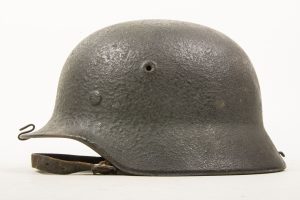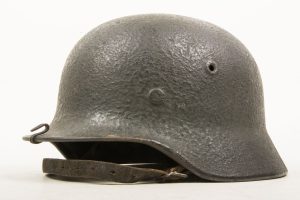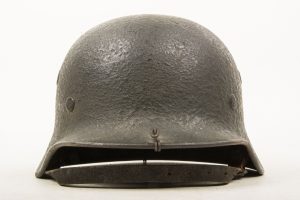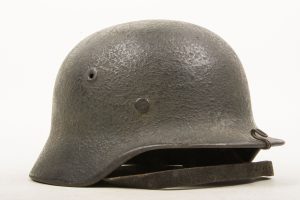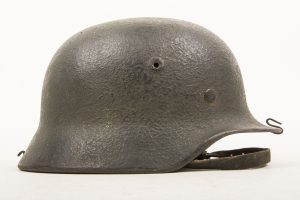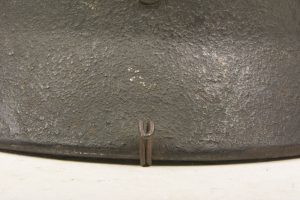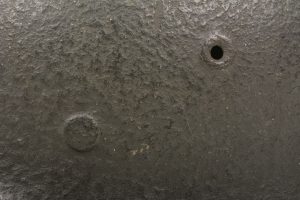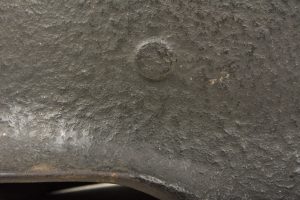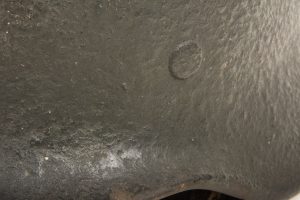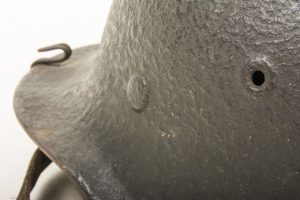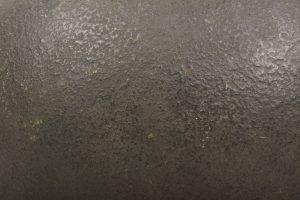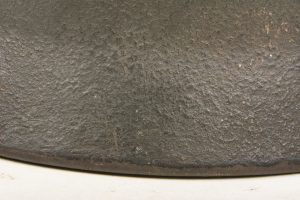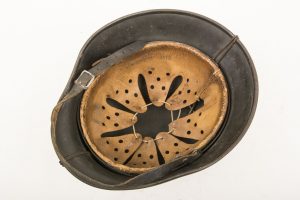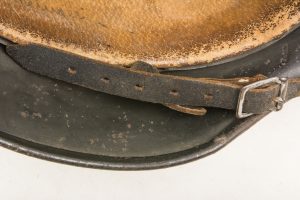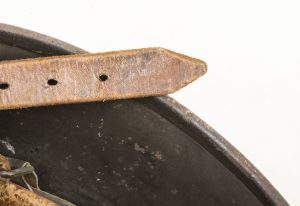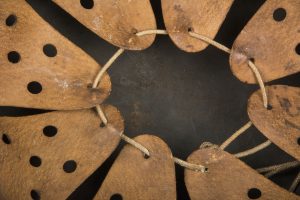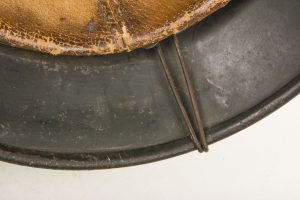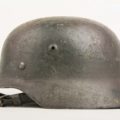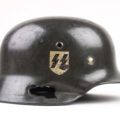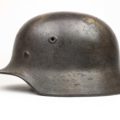Helmet – M40 – Q64 – Rautarn camouflage – Netting hooks
Arguably the helmet was the most recognizable part of the individual German soldiers appearance. With a design that derived from the type used in world war one, the German helmet offered more protection then ones used by it’s enemies. The quality field gray painted steel helmet with two decals and rolled steel rim and leather liner was a labor intensive product and simplified as the war progressed. The earliest model helmet used in world war two was the model 35 or M35 Stahlhelm. During the war the helmet was simplified in 2 stages. In 1940 the airvents changed from separate rivets affixed to the helmet shell to stamped in the main body of the shell. In 1942 a new model was introduced where the rim of the shell was left sharp and not rolled over as previous models. These models are known in the collector community as M40 and M42. The low sides that protect the neck and ears, the tell tale design that the Germans introduced in 1935 can still be seen in modern day army helmets.
Model: M40
Decal: None, this type with the marking in this position doesn’t seem to be issued with decals.
Paint: 2 layers of paint:
1. Factory applied dull field gray paint with rough aluminium oxide.
2. Field applied thick concrete or Rautarn camouflage
Markings: Q64
Chinstrap: Blackened leather, unmarked
Maker: Q64 indicates production by Quist, Esslingen.
Size: Shellsize 66, headsize 58 cm
Batch number: –
Year: 1944
Notes: The Quist firm produced the size 64 M40 helmet shell right up till late in 1944 whilst the other companies all adopted the M42 model. This helmet was made for all the branches just like the M42 helmet without decal. The helmet is externally completely covered in thick concrete paint embedding the liner pins. The helmet has a set of period applied metal wire loops for the application of a helmet net. The named leather liner and chinstrap are original to this helmet.



